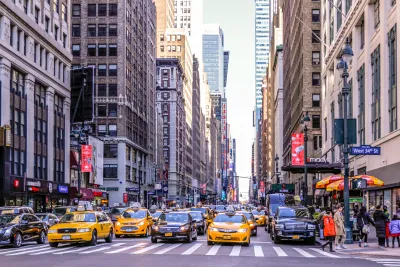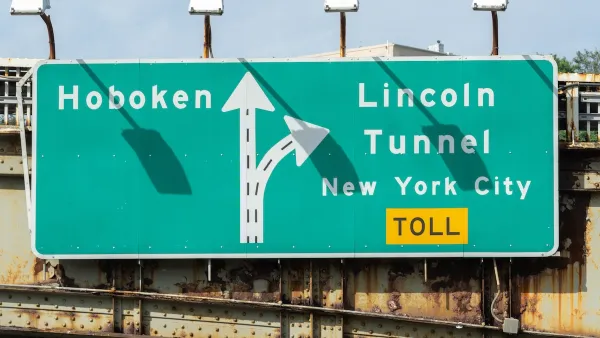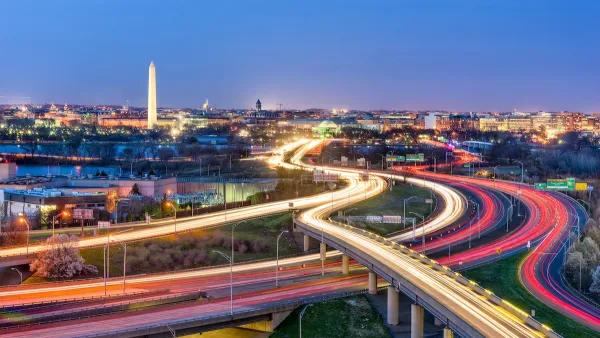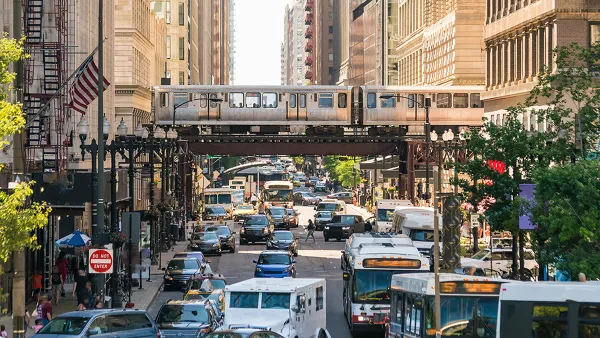And why it is wrong.

Recently, the federal government approved an environmental assessment for Manhattan’s congestion pricing program, allowing the program to go forward. By making driving more expensive, the program is likely to reduce pollution, injuries from traffic crashes, noise and automobile-related congestion in Manhattan, and will provide tax revenue for New York City’s public transit program.
Nevertheless, this program is quite controversial. One of the most interesting arguments against the program is that it is actually bad for Manhattan. For example, polymath and economist Tyler Cowen argues that to the extent congestion pricing succeeds in reducing congestion, it will reduce the flow of humans going into Manhattan, thus reducing revenue for Manhattan’s businesses, cultural attractions etc. This argument has some factual basis: even if most would-be drivers will be lured onto mass transit by congestion pricing, some number exceeding zero will avoid the city instead.
The argument rests on an assumption that a city is most appealing when automobile commuting is easy. But this assumption seems inconsistent with historical reality. This is the assumption that justified the “urban renewal” policies of the mid-20th century: city leaders used eminent domain to physically destroy city neighborhoods in order to build highways (and widen surface streets) leading to suburbia, so that suburbanites could drive to the city more easily. In addition, the same city leaders instituted minimum parking requirements so that suburbanites could park in the city more easily, thus turning downtowns into a wilderness of parking lots. If Cowen’s assumption had been correct, mid-century Americans would have flocked to renew old urban neighborhoods, since the cities were so easy to enter and exit. Instead, the highways and parking made it easier to commute from city to suburb, and thus encouraged commuters to move to suburbs. And after the commuters moved, jobs and businesses moved with them, and central cities declined. *
The least drivable and most congested cities, such as New York City, survived urban renewal with most of their population intact: New York lost only 11 percent of its population between 1950 and 1980, and its current population now exceeds its 1950 population. By contrast, low-congestion cities (other than those that annexed huge chunks of suburbia) suffered horribly: for example, St. Louis has lost over a third of its 1950 population.**In those cities, urban renewal was very, very successful at facilitating automobile commuting—as a result, it was very, very unsuccessful in renewing the city.
In sum, a “drivable” city is not necessarily a prosperous one. So if making cities like Manhattan easier to drive through doesn’t make them more appealing, it logically follows that making them harder to drive through won’t make them less appealing.
*Admittedly, highways were not the only cause of suburbanization. However, there is certainly some scholarly evidence of a causal relationship. Moreover, most other possible causes of suburbanization (rising crime, corruption, failed school integration, etc) existed in New York just as they existed in St. Louis or other declining cities.
**Can I prove that there is a causal relationship here? Because we don't know which cities were most congested in 1950 or 1970, it is hard to be sure. One might argue that New York is more congested only because it has not lost population. On the other hand, it seems to me as a matter of common sense that if it is easy for workers to live in the suburbs and drive downtown, they are more likely to live in the suburbs than if such commuting was more difficult.

National Parks Layoffs Will Cause Communities to Lose Billions
Thousands of essential park workers were laid off this week, just before the busy spring break season.

Retro-silient?: America’s First “Eco-burb,” The Woodlands Turns 50
A master-planned community north of Houston offers lessons on green infrastructure and resilient design, but falls short of its founder’s lofty affordability and walkability goals.

Delivering for America Plan Will Downgrade Mail Service in at Least 49.5 Percent of Zip Codes
Republican and Democrat lawmakers criticize the plan for its disproportionate negative impact on rural communities.

Test News Post 1
This is a summary

Test News Headline 46
Test for the image on the front page.

Balancing Bombs and Butterflies: How the National Guard Protects a Rare Species
The National Guard at Fort Indiantown Gap uses GIS technology and land management strategies to balance military training with conservation efforts, ensuring the survival of the rare eastern regal fritillary butterfly.
Urban Design for Planners 1: Software Tools
This six-course series explores essential urban design concepts using open source software and equips planners with the tools they need to participate fully in the urban design process.
Planning for Universal Design
Learn the tools for implementing Universal Design in planning regulations.
EMC Planning Group, Inc.
Planetizen
Planetizen
Mpact (formerly Rail~Volution)
Great Falls Development Authority, Inc.
HUDs Office of Policy Development and Research
NYU Wagner Graduate School of Public Service






























